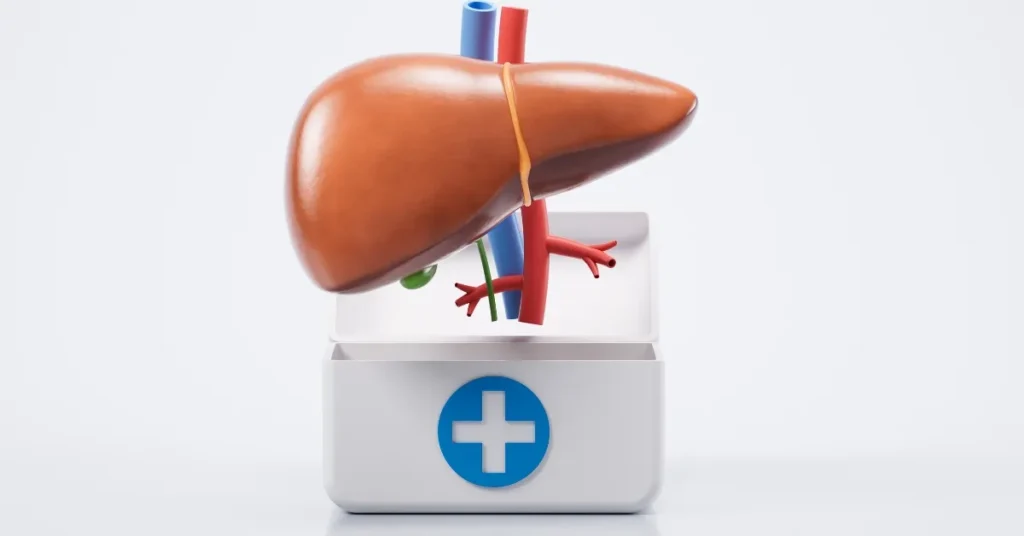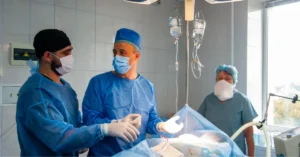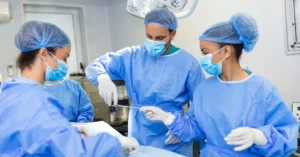A Living Donor Liver Transplant is a groundbreaking procedure that provides hope to patients suffering from end-stage liver disease. Unlike traditional transplants that rely on deceased donors, this option allows a healthy person to donate a portion of their liver, which can regenerate after surgery. This life-saving procedure not only shortens wait times for recipients but also offers a healthier, immediate solution, giving patients the chance to regain their health faster.
Definition of a Liver Donor
A liver donor is a person who voluntarily donates a portion of their healthy liver to a recipient in need of a liver transplant. This can be done either through a deceased donation or, increasingly, through a living liver donation. In a Living Donor Liver Transplant, the donor is alive and well, offering a portion of their liver to someone whose liver is failing due to conditions such as cirrhosis, liver cancer, or other liver-related diseases.
To become a living liver donor, an individual must meet strict medical and psychological criteria to ensure their safety and the success of the transplant.
Key points about a liver donor include:
- Must be in good physical and mental health.
- Should be between the ages of 18 and 60.
- Cannot have a history of liver disease, diabetes, or severe chronic conditions.
- Must have a compatible blood type with the recipient.
A liver donor plays a crucial role in saving lives, and their donated liver portion regenerates to full size within months. Living liver donation not only helps reduce waiting times for recipients but also provides a more immediate, healthier transplant option. This selfless act offers both a second chance at life for the recipient and a sense of fulfillment for the donor.
Live Donor Criteria
Becoming a liver donor is a significant decision that requires careful consideration, both emotionally and medically. To ensure the safety of both the donor and recipient, potential donors must meet strict health and eligibility criteria for a Living Donor Transplant. The health and well-being of the donor are of utmost importance, as liver donation is a major surgery.
Key criteria for living liver donation include:
- Age and health: Donors should typically be between 18 and 60 years old and in excellent physical and mental health.
- Body Mass Index (BMI): A healthy BMI, usually below 30, is required to reduce surgical risks and ensure a successful recovery.
- No liver-related issues: The potential donor must have a fully functioning liver with no history of liver disease, hepatitis, or severe alcohol use.
- No serious health conditions: Conditions like diabetes, cancer, heart disease, or kidney disease may disqualify someone from being a donor.
In addition to meeting the physical requirements, potential donors must undergo thorough medical evaluations, including blood tests, imaging, and psychological assessments. These tests help determine if the individual is physically and mentally prepared for the demands of a Living Donor Transplant. Only those who meet all these criteria can safely proceed with the surgery, ensuring the best possible outcome for both the donor and the recipient.
Compatibility of Blood Groups
In a Living Donor Transplant, ensuring that the donor and recipient have compatible blood groups is crucial for a successful procedure. The compatibility between the donor’s and recipient’s blood types helps minimize the risk of rejection, where the recipient’s immune system attacks the transplanted liver. Blood group compatibility is similar to what’s required for blood transfusions, where matching blood types prevent adverse reactions.
Here’s how blood group compatibility typically works in living liver donation:
- Donor with Blood Type O: Can donate to recipients with any blood type (O, A, B, AB), making them universal liver donors.
- Donor with Blood Type A: Can donate to recipients with blood types A and AB.
- Donor with Blood Type B: Can donate to recipients with blood types B and AB.
- Donor with Blood Type AB: Can only donate to recipients with AB blood type, but can receive from all other blood types.
While blood group compatibility is important, advancements in medicine have allowed for certain cases where incompatible blood types may still result in a successful transplant. Specialized medical procedures like plasmapheresis may be used in these scenarios to reduce the risk of rejection.
For both the liver donor and recipient, careful blood group matching and pre-surgical tests are essential to ensure the highest chances of success in the Living Donor Transplant process.
Benefits of Liver Donation
Becoming a part of a living liver donation is a profoundly impactful decision that can save lives. There are numerous advantages for both the donor and the recipient when choosing a Living Donor Transplant over a traditional deceased donor transplant.
For the recipient, one of the most significant benefits is the reduced waiting time. Patients suffering from liver failure often face long waitlists for a suitable deceased donor. With a Living Donor Transplant, the transplant can be scheduled much sooner, significantly improving the patient’s chances of recovery.
Additionally, the donated liver portion from a living donor is generally healthier, as it comes from someone in good health rather than a deceased individual. This can lead to better transplant outcomes for the recipient.
Key benefits of liver donation include:
- Shorter waiting times for patients in critical condition.
- Healthier liver portions from a living donor, increasing success rates.
- Liver regeneration: Both the donor and recipient’s livers will regrow to normal size within a few months after the surgery.
- Emotional fulfillment for the donor, knowing they’ve saved someone’s life.
In short, living liver donation offers hope and quicker recovery for patients, while donors experience the deep satisfaction of giving someone a second chance at life.
Risks and Considerations
While a Living Donor Transplant offers many benefits, it also comes with important risks and considerations that both the donor and recipient should carefully evaluate. Donating a portion of your liver is a major decision, and the process involves thorough medical and psychological assessments to ensure it is safe for both parties involved.
The key risks associated with a living liver donation include:
- Surgical Complications: As with any major surgery, there is a risk of infection, bleeding, or reactions to anesthesia.
- Recovery Time: For the liver donor, the recovery period can take 6 to 8 weeks, during which the donor may experience fatigue, discomfort, and restricted physical activities.
- Liver Function: Although the liver regenerates, the donor’s liver may not function at full capacity immediately, and regular monitoring is essential.
Key considerations for donors include:
- The potential for temporary or long-term pain and discomfort.
- Psychological effects such as anxiety or depression.
- Financial costs, including lost wages during recovery, though many transplant centers offer financial counseling.
A Living Donor Transplant can be an emotionally fulfilling process, but it is crucial for potential donors to understand all risks and have realistic expectations about the recovery and impact on their lifestyle.
Preparation and Evaluation
Before undergoing a Living Donor Transplant, both the donor and recipient must go through a comprehensive preparation and evaluation process. This stage is critical to ensure the safety and success of the procedure for both parties.
The potential liver donor will undergo a series of medical, psychological, and physical assessments to confirm their suitability for the transplant. This evaluation ensures that the donor is in optimal health and fully prepared for the surgery. The recipient will also be assessed to determine their readiness for receiving a new liver.
Key steps in the preparation and evaluation process include:
- Medical Tests: Blood tests, imaging scans (like CT or MRI), and liver function tests to evaluate the donor’s liver health.
- Psychological Evaluation: To assess the donor’s mental and emotional readiness, ensuring they understand the risks and commitment involved.
- Physical Examination: A thorough health check-up to rule out any conditions that could complicate surgery.
For the recipient, the evaluation ensures they are physically prepared to handle the transplant and the post-surgery recovery process. Both parties need to be fully informed about the living liver donation process, risks, and long-term care. Proper preparation and evaluation are essential for a successful liver transplant surgery.
Surgical Procedure
The Living Donor Transplant surgical procedure is a highly specialized and carefully planned process that involves both the donor and the recipient. The procedure typically lasts between 6 to 8 hours and requires a skilled surgical team to ensure a successful outcome. The liver has a unique regenerative ability, which makes living liver donation possible.
Here’s how the surgical procedure generally unfolds:
- Donor surgery: The surgeon begins by removing a portion of the donor’s liver, usually the right lobe, which accounts for about 60% of the organ.
- Recipient surgery: The portion of the donor’s liver is then transplanted into the recipient, replacing their failing liver.
- Liver regeneration: Both the donor and recipient’s livers will begin to regenerate soon after surgery, reaching full functionality in a few months.
The key benefits of this approach include:
- Shorter waiting times for the recipient.
- A healthier and more viable liver portion.
- Faster recovery for the recipient compared to deceased donor transplants.
However, like any major surgery, there are risks involved, including infection and complications related to anesthesia. Despite these risks, Living Donor Transplant is a life-saving option that significantly improves the patient’s survival chances.
Partial Liver Donation
Partial liver donation plays a vital role in living donor liver transplants, offering a life-saving alternative for those suffering from liver failure. In this procedure, the donor donates a portion of their liver, usually the left or right lobe, tailored to the recipient’s size and medical needs. The remaining liver in the donor regenerates to its full size within weeks, ensuring both donor and recipient can achieve normal liver function. This remarkable regenerative capacity of the liver allows for quicker recovery and reduces the risks associated with waiting for a deceased donor liver.
Benefits of Partial Liver Donation:
- Reduced waiting time: Provides faster access to a transplant for recipients.
- Liver regeneration: The donor’s liver regenerates within months, minimizing long-term health impacts.
- Improved survival rates: Recipients have a higher chance of survival and better long-term outcomes due to timely transplantation and improved recovery.
Recovery and Follow-Up
Recovery and follow-up are crucial stages after a Living Donor Transplant for both the donor and recipient. While the procedure itself is life-saving, the post-surgery period requires careful attention and medical supervision to ensure successful outcomes.
For the liver donor, recovery typically involves:
- A hospital stay of around one week after surgery.
- A gradual return to daily activities, usually within 6 to 8 weeks.
- The liver begins regenerating immediately, reaching its full size within a few months.
Key aspects of liver donor recovery include:
- Pain management: Donors may experience discomfort, but it is generally well-managed with medication.
- Rest and mobility: Donors are advised to rest but gradually increase activity, such as walking, to promote healing.
- Nutritional support: A balanced diet aids in liver regeneration and overall recovery.
- Regular follow-ups: Continued monitoring through medical check-ups ensures that the donor’s liver regenerates properly and no complications arise.
For the recipient, the recovery process is longer, with close medical supervision required for months after the Living Donor Transplant. Regular follow-up appointments ensure the transplanted liver functions correctly, and any signs of rejection or infection are promptly addressed. Successful recovery often leads to significant improvements in the recipient’s quality of life.
Conclusion
Living donor liver transplant offers a life-saving option for patients suffering from liver failure. By using a partial liver from a healthy donor, this procedure significantly reduces waiting times, allowing recipients to receive the care they need more promptly. Both the donor and recipient benefit from the liver’s remarkable ability to regenerate, ensuring a full recovery for both. A living donor liver transplant not only saves lives but also enhances recovery outcomes, making it a preferred option in liver transplant care.






